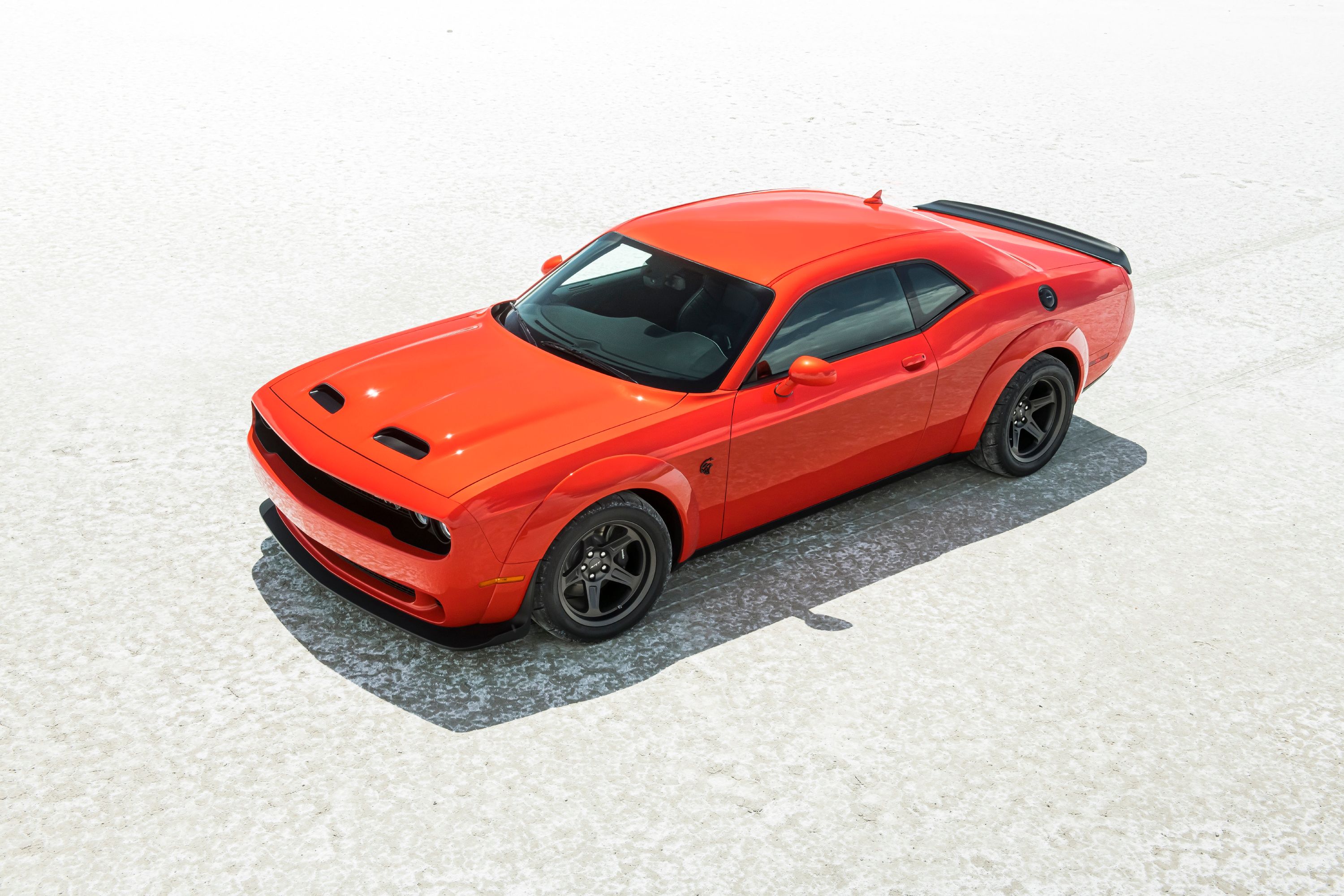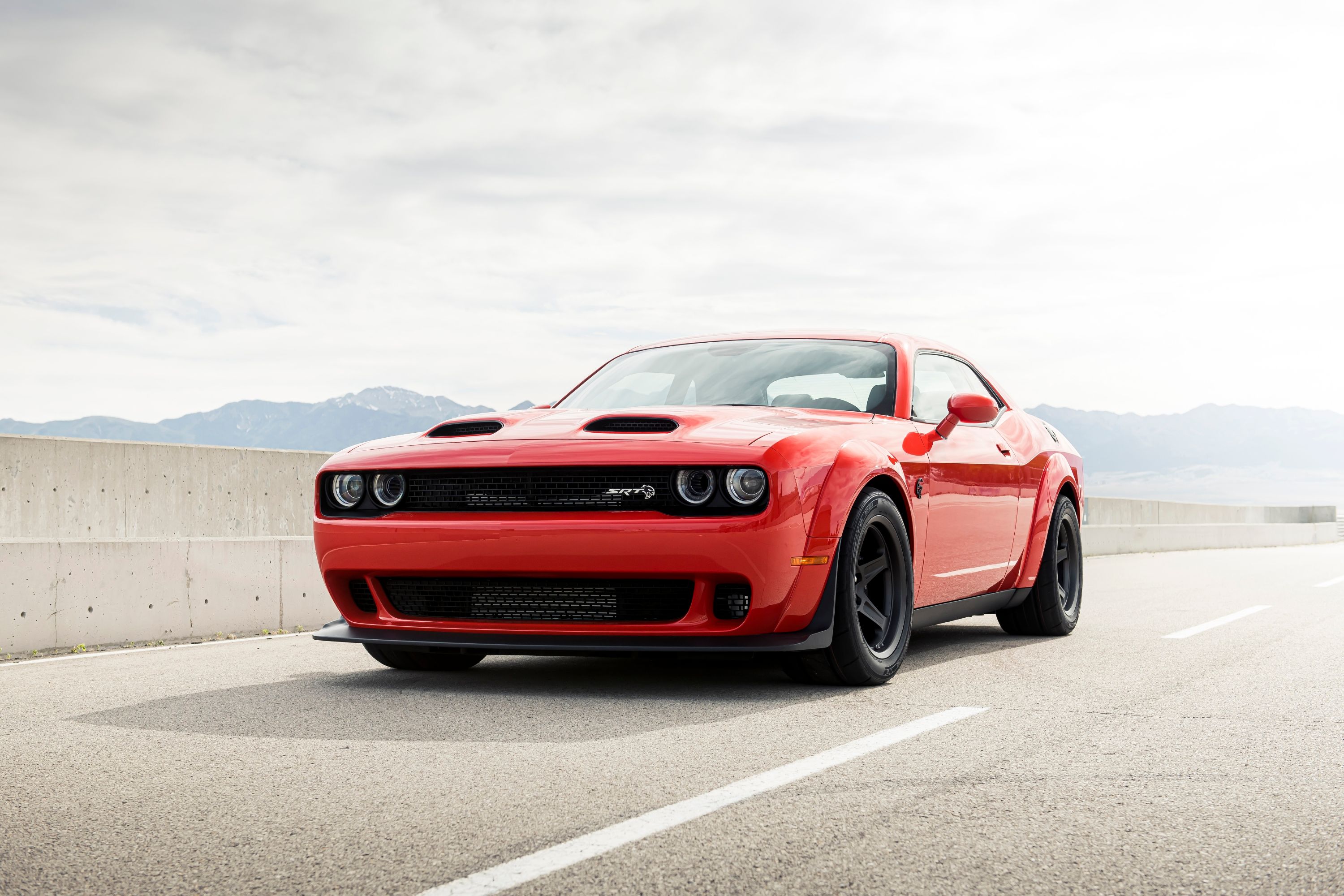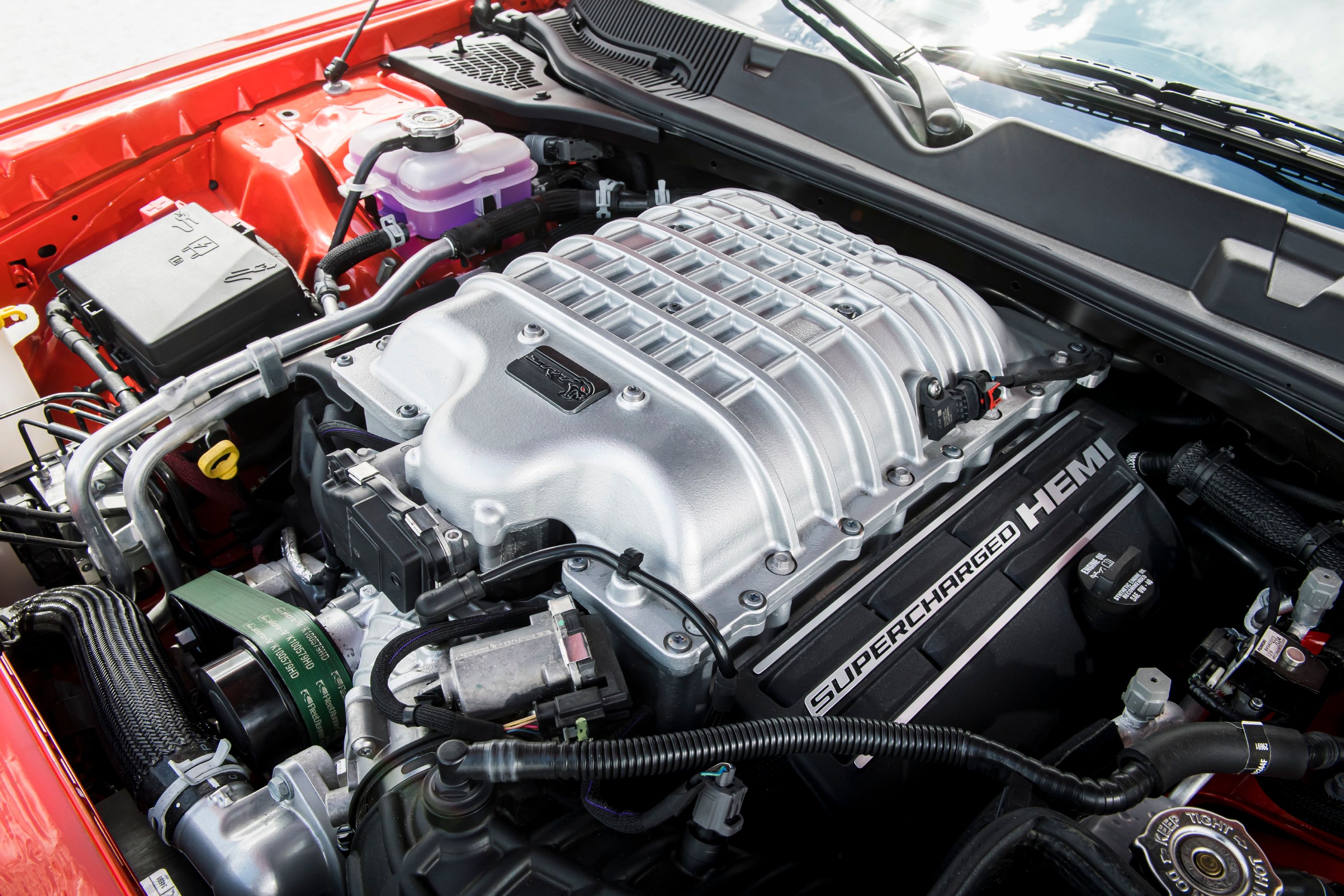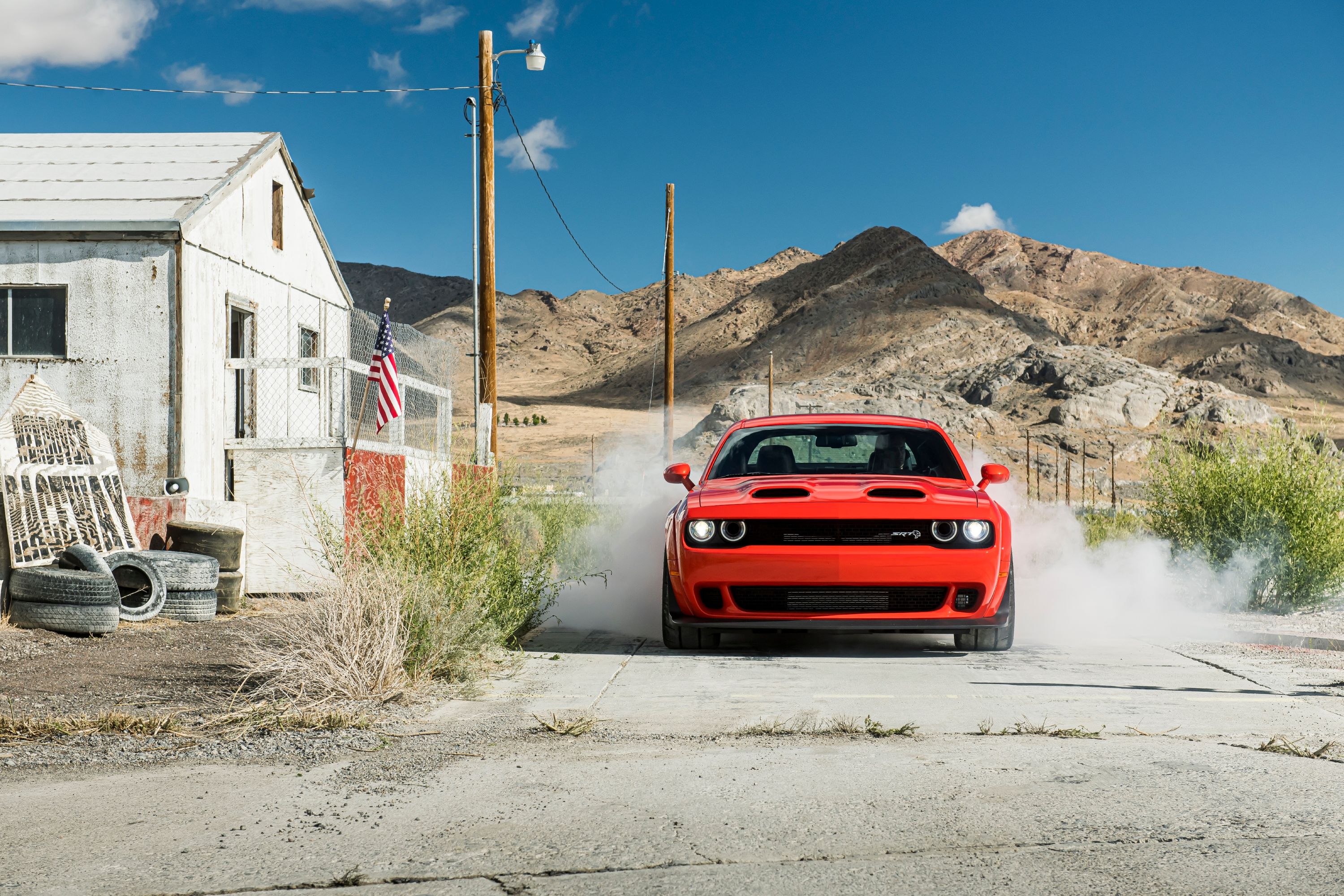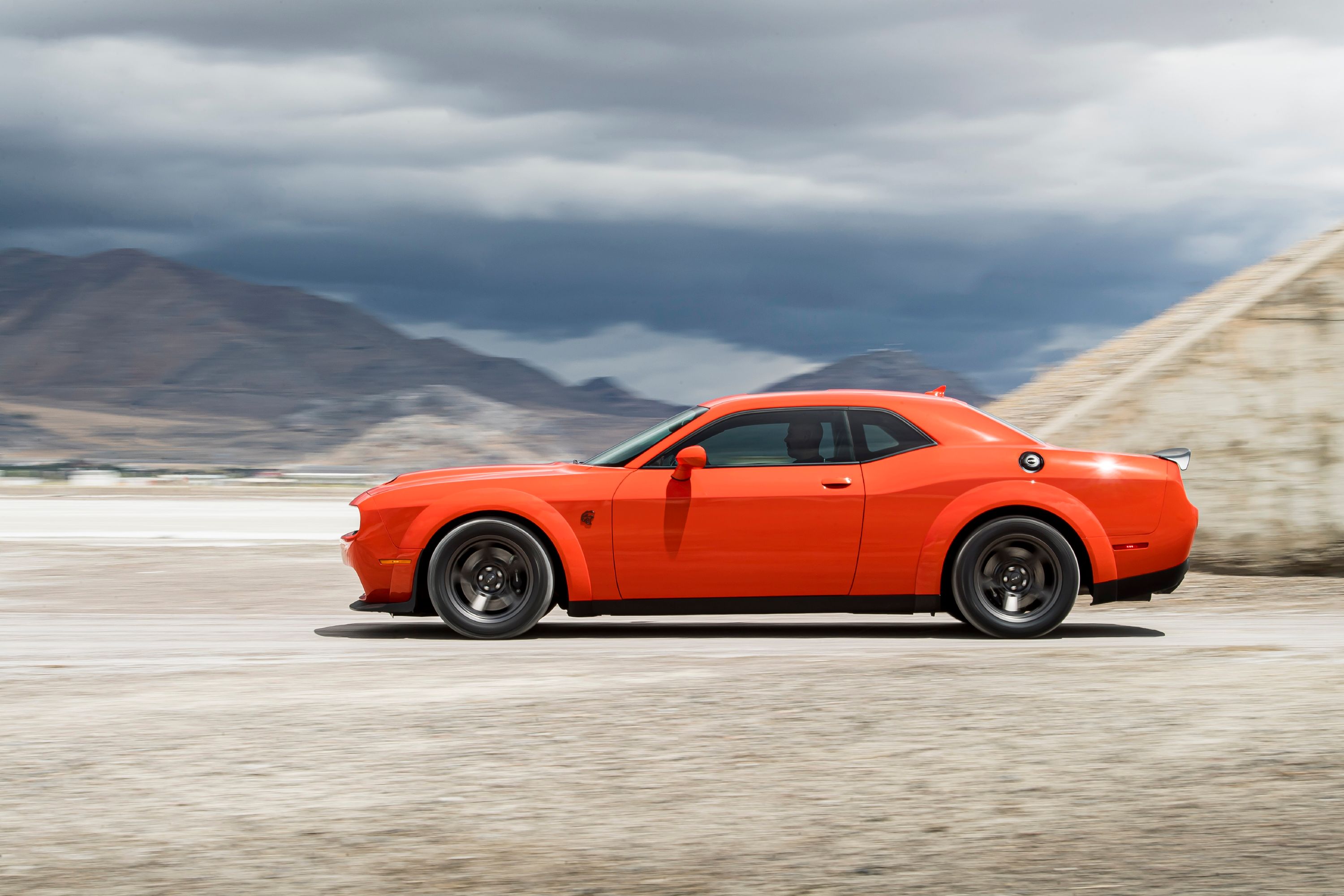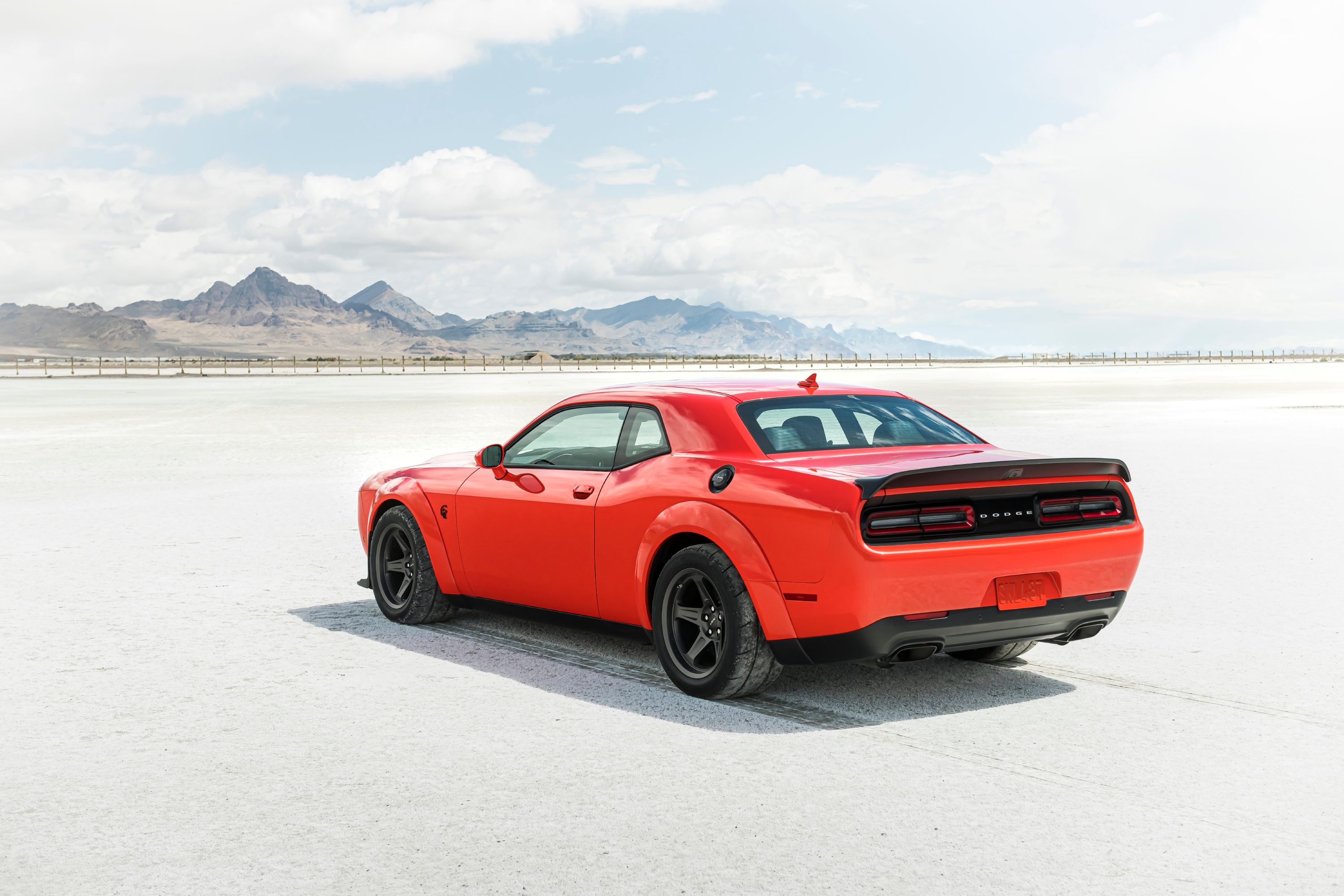Just when you thought the Dodge Challenger couldn’t get any more mental, the SRT Super Stock arrives with its chest puffed out and already claiming the title of the world’s fastest and most powerful muscle car. Wider than the SRT Hellcat Redeye and sporting fat and sticky radial tires, the Challenger SRT Super Stock upends the Redeye as the most powerful muscle car in the world. It comes with the same powerhouse engine, but output is tuned to 807 horsepower. The Super Stock joins the demented Challenger SRT Demon as the only two muscle cars with more than 800 ponies on tap.Dodge hasn’t mentioned a price tag for the Super Stock, but expect it to cost a little more than the Hellcat Redeye’s $80,190 sticker price, and order books should open summer of 2020.
Is the Dodge Challenger SRT Super Stock really the fastest and most powerful muscle car in the world?
Technically, the SRT Super Stock isn't the most powerful muscle car in the world.
What can we expect from the Dodge Challenger SRT Super Stock?
Is there more to the Dodge Challenger SRT Super Stock than a 10-horsepower bump over the Challenger SRT Hellcat Redeye?
The Challenger SRT Super Stock’s 807-horsepower output will undoubtedly catch all the headlines, and justifiably so. But there’s more to the Super Stock than the amount of power it’s packing underneath that long hood. The Super Stock’s wide-body frame hides a set of lightweight 18-inch wheels that are each wrapped in 315-section-width Nitto NT05R drag radials. These are specialized tires that are meant to help the Super Stock showcase its might in the drag strip.
Speaking of the suspension, Dodge used the same suspension blueprint for the Super Stock as it did in the Demon. In Track Mode, for example, the Super Stock’s front suspension is set for firm compression and soft rebound. Meanwhile, the rear suspension keeps it firm compression and rebound. This setup helps the Super Stock transfer as much load as possible to the rear, helping improve its performance capabilities, particularly in the drag strip.
Will the Dodge Challenger SRT Super Stock live up to the hype?
Say what you will about Dodge’s seeming obsession with upping the performance ante of the current-generation Challenger. Has it become too much? Perhaps. But you can’t deny that the results speak for themselves. The Dodge Challenger SRT Super Stock will arrive soon — it will be available to order at dealers around the summertime with production set to commence in the fall — and when it does, you can expect it to dominate headlines.
Pricing estimates call for the Challenger SRT Super Stock to cost more than the $80,190 Redeye, so don’t be surprised if you end up having to spend somewhere in the $85,000 range to be able to go home with what is now the fastest and most powerful muscle car in the world not named the Demon.

